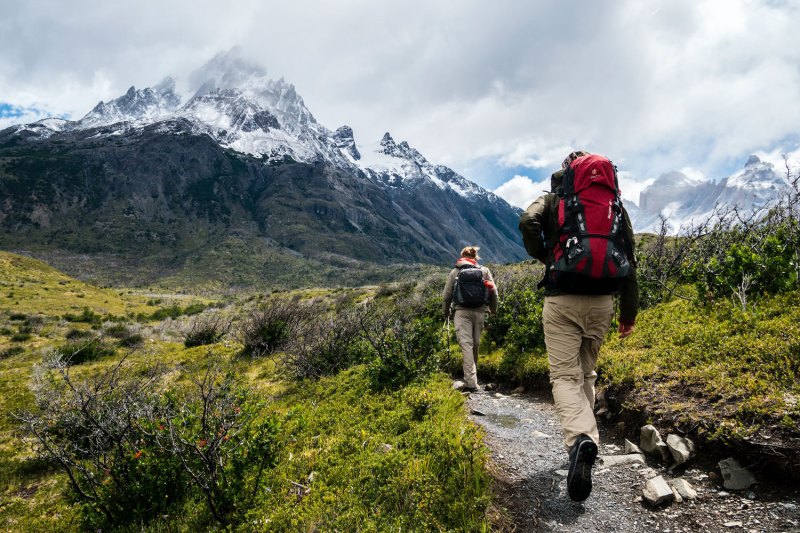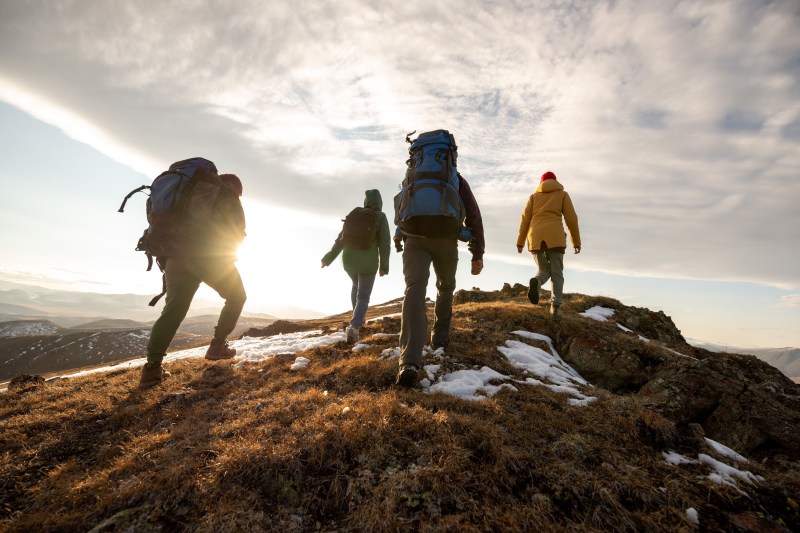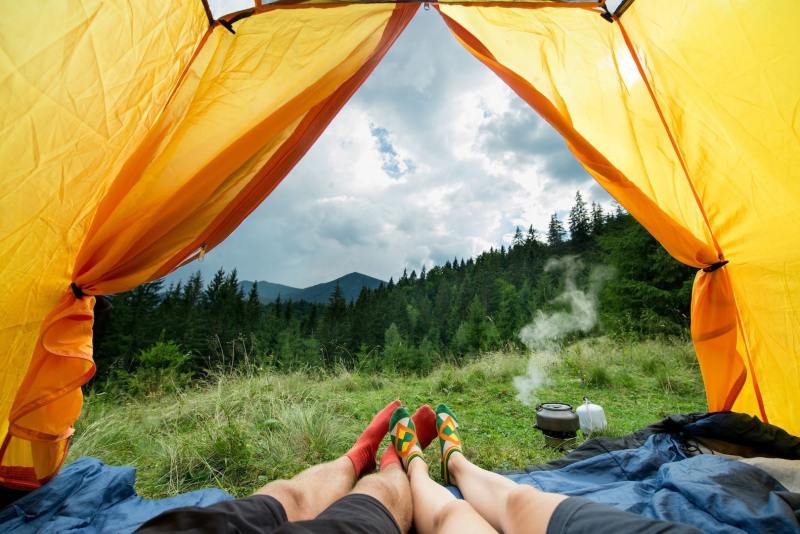
Hiking and camping in the great outdoors are much-needed escapes from the hustle and bustle of daily life. The serenity of nature, the breathtaking landscapes, and the sense of adventure all draw us to these outdoor activities. That said, it’s crucial to acknowledge that our outdoor adventures can leave a lasting impact on the environment.
As responsible nature enthusiasts, we have the power and responsibility to minimize our carbon footprint while hiking or camping, which ensures that future generations can enjoy the same breathtaking landscapes we treasure today.
While it might seem overwhelming, every person can do something more to champion this cause. Read on to learn more about your carbon footprint, why it matters, and what you can do to help preserve our natural environment.

What is a carbon footprint, and why does it matter?
A carbon footprint is the total amount of greenhouse gas emissions, primarily carbon dioxide (CO2), released into the atmosphere as a result of human activities. It measures the impact of individuals, organizations, or products on climate change.
Many environmental scientists say that greenhouse gases harm the environment by contributing to global warming and climate change. The gases disrupt weather patterns, cause rising sea levels, lead to ocean acidification, and accelerate biodiversity loss. According to experts, mitigating greenhouse gas emissions through renewable energy, energy efficiency, sustainable practices, and conservation is essential to minimizing environmental damage.
Everyone can do their part, and it all starts by being aware. By understanding the consequences of our carbon footprint and actively taking steps to reduce it, we can play a vital role in mitigating the harmful effects of climate change and preserving a sustainable and habitable planet for future generations.

Hiking and camping tips to reduce your carbon footprint
When it comes to hiking and camping, it’s important to acknowledge that while these activities may not have the highest greenhouse gas emissions, they can still impact the environment in a lot of ways. So how can you do your part when you head out to hike or camp? Here are a few great ideas to consider:
Choose eco-friendly transportation
Transportation is one of the biggest sources of greenhouse gas emissions, so thinking about what kind of transportation you use is one of the easiest ways to reduce your carbon footprint while hiking or camping. If you’re meeting other people, consider carpooling, or look into public transportation. If your trailhead is close enough, you might even be able to bike there.
Opt for local trails
Opting for local trails and campgrounds is an excellent strategy to further reduce your carbon footprint while hiking and camping. By choosing destinations closer to home, you significantly decrease the travel distance required to reach your outdoor getaway. This directly translates to lower fuel consumption, which not only benefits the environment but also saves you money and time.
Moreover, choosing local trails and campgrounds presents an opportunity to support your local community. These outdoor destinations often rely on visitors and donations to sustain their operations. By frequenting nearby trails and campgrounds, you also bolster the livelihoods of local businesses, such as outdoor gear shops, restaurants, accommodations, and tour operators. Your support helps create a thriving community around outdoor recreation and encourages the preservation of these natural areas.
Use reusable water bottles and food containers
Using reusable water bottles on the trail is another great way to reduce your carbon footprint. It’s far more cost-effective to refill a water bottle than it is to use single-use plastics. Reusable water bottles are far more durable, so they won’t break open if you drop them by accident. Take this a step further and bring your meals in glass or plastic food containers, use metal silverware, and use cloth napkins.
Leave no trace
Now that we’re on the subject of waste, it’s a great time to discuss a leave-no-trace principle. If you’ve never heard of it, the concept is pretty simple: Bring out what you take in. Whether that’s trash, gear, or provisions, bring it all back with you. Otherwise, you might attract dangerous animals like bears towards high-traffic areas or cause wildlife to suffocate.
Respecting the environment in this way also means a commitment not to damage the foliage or wildlife. Disrupting the ecosystem can be detrimental to all the living things that depend on each other to survive, so leave things the way you found them.
Support eco-conscious outdoor brands
When it comes to purchasing from outdoor brands, you hold the power to make a positive impact. This is the part where you get to vote with your money, so purchase from brands that reflect your values. Most eco-conscious outdoor brands will have Fair Trade or B Corp certifications. Others might have their environmental initiatives published in a prominent place on their website. You can even look at the product materials list to ensure that it’s made using eco-friendly materials. When in doubt, read customer reviews and seek recommendations.

Final thoughts
Reducing your carbon footprint while hiking or camping is not only a responsible choice but also an opportunity to deepen your connection with nature. Even small actions can collectively make a difference in minimizing environmental damage, so by implementing these tips, you can do your part to protect our planet.



